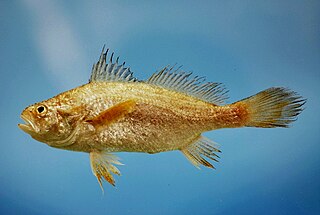
Equidae is the taxonomic family of horses and related animals, including the extant horses, asses, and zebras, and many other species known only from fossils. The family evolved around 50 million years ago from a small, multi-toed ungulate into larger, single-toed animals. All extant species are in the genus Equus, which originated in North America. Equidae belongs to the order Perissodactyla, which includes the extant tapirs and rhinoceros, and several extinct families.

Characidae, the characids or characins is a family of freshwater subtropical and tropical fish, belonging to the order Characiformes. The name "characins" is the historical one, but scientists today tend to prefer "characids" to reflect their status as a by and large monophyletic group at family rank. To arrive there, this family has undergone much systematic and taxonomic change. Among those fishes that remain in the Characidae for the time being are the tetras, comprising the very similar genera Hemigrammus and Hyphessobrycon, as well as a few related forms such as the cave and neon tetras. Fish of this family are important as food and also include popular aquarium fish species.

Emydidae is a family of testudines (turtles) that includes close to 50 species in 10 genera. Members of this family are commonly called terrapins, pond turtles, or marsh turtles. Several species of Asian box turtles were formerly classified in the family; however, revised taxonomy has separated them to a different family (Geoemydidae). As currently defined, the Emydidae are entirely a Western Hemisphere family, with the exception of two species of pond turtle.

Acacia, commonly known as the wattles or acacias, is a large genus of shrubs and trees in the subfamily Mimosoideae of the pea family Fabaceae. Initially, it comprised a group of plant species native to Africa and Australasia. The genus name is Neo-Latin, borrowed from the Greek ἀκακία, a term used by Dioscorides for a preparation extracted from the leaves and fruit pods of Vachellia nilotica, the original type of the genus. In his Pinax (1623), Gaspard Bauhin mentioned the Greek ἀκακία from Dioscorides as the origin of the Latin name.
Unquillosaurus is a genus of possible maniraptoran or carnosaurian theropod dinosaur from the Late Cretaceous Los Blanquitos Formation of Salta Province, Argentina. The genus contains a single species, U. ceibalii, known only from a single fossilized pubis.
Pygidianops is a genus of pencil catfishes native to South America.

Francisco Mago Leccia (“Mago”) was born in Tumeremo, Bolívar State, Venezuela on May 21, 1931 and died in Puerto La Cruz, Anzoátegui State, Venezuela on February 27, 2004. Mago was a distinguished Venezuelan ichthyologist who specialized in electric fish of the rivers and lagoons of South America, particularly of Venezuela. His education was Docent in Biology and Chemistry graduate from the “Instituto Pedagógico de Caracas”,, Master of Sciences from the University of Miami, Florida, U.S.A., Doctor in Sciences from Universidad Central de Venezuela. His Doctoral Thesis was entitled: “Los peces Gymnotiformes de Venezuela: un estudio preliminar para la revisión del grupo en la América del Sur”.
Hylaeonympha magoi is a species of damselfly in the family Coenagrionidae. It is endemic to Venezuela.
Hylaeonympha is a genus of damselfly in the family Coenagrionidae. It contains the following species:
Falsistrellus is a genus of vespertilionid family of bats, small predatory flying mammals. They are known from Australia. The poorly researched species have been variously placed by authors, and revised again by studies of their distinct characteristics, consequently the falsistrelles may also be referred to as pipistrelles or false pipstrelles.

Bryconops is a genus of freshwater fish in the family Iguanodectidae from South America. It consists of small fish, all under half-a-foot long, with slender bodies and silvery scales, though there is some mild color variation. Several species can be identified by way of a humeral patch, and others have a reddish ocellus, or eyespot, on one or both lobes of the dorsal fin.

Ageneiosus is a genus of driftwood catfishes found mostly in South America with one species extending into Central America.
Brachyglanis is a genus of Three-barbeled catfishes native to South America.

Apteronotus is a genus of weakly electric knifefish in the family Apteronotidae, distinguished by the presence of a tiny tail fin. This genus is restricted to tropical and subtropical South America and Panama where found in a wide range of freshwater habitats. They feed on small animals.
Nitrospirota is a phylum of bacteria. It includes multiple genera, such as Nitrospira, the largest. The first member of this phylum, Nitrospira marina, was discovered in 1985. The second member, Nitrospira moscoviensis, was discovered in 1995.

Stellifer is a genus of fish in the family Sciaenidae, the drums and croakers. It is found in New World waters. Many species are known commonly as stardrums.

The tailspot tetra is a freshwater fish that lives in the coastal river regions of upper South America. Both its common and scientific names reference the distinct spot of color present on the tail fin, which is one of its defining characteristics. It is a small fish, reaching 4.8 in at its longest. Despite its small size, it is an active swimmer, with a preference for fast-flowing waters.

Bryconops collettei is a small freshwater fish from the rivers of South America. It is mostly silvery, with notable green iridescence on its sides, and a diffuse ocellus (eyespot) on the upper lobe of the caudal fin. Before its distinction as a separate species, specimens of B. collettei were misidentified as specimens of Bryconops caudomaculatus due to several morphological similarities, including a caudal ocellus and generally similar fin coloration.

Bryconops magoi is a small species of fish from South America. It is only found in Venezuela, along with sister species Bryconops collettei. Its tail-fin markings help to differentiate it from various congeners, as does its fairly restricted range. It is most closely related to B. collettei and Bryconops caudomaculatus, and it was once considered synonymous with the latter; specimens of B. magoi and B. collettei both were routinely misidentified as B. caudomaculatus before being given species distinction.

Bryconops melanurus, sometimes called the tail-light tetra, is a small species of freshwater fish from South America that primarily preys on insects. It lives in small schools and is an active swimmer, which means that it requires open space in its habitat. Nonetheless, it does not demonstrate a strong preference for any one biotope within its native range.











